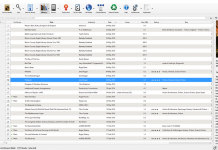 Now here’s something I didn’t know, but that will undoubtedly not surprise many. In the New York Times, cyberpunk author William Gibson writes that an early PC virus started out as a fairly primitive attempt at DRM, created by a couple of sibling programmers in 1986 to protect their heart-monitoring software from piracy.
Now here’s something I didn’t know, but that will undoubtedly not surprise many. In the New York Times, cyberpunk author William Gibson writes that an early PC virus started out as a fairly primitive attempt at DRM, created by a couple of sibling programmers in 1986 to protect their heart-monitoring software from piracy.
Computers that ran their program, plus this new bit of code, would stop working after a year, though they cheerfully provided three telephone numbers, against the day. If you were a legitimate user, and could prove it, they’d unlock you.
Computer vandals of the day began copying this bit of code, distributing it, and infecting other peoples’ computers with it. And this led to an entire culture of virus writers that persists to this day 25 years later. Gibson seems surprised that these vandals did it not for money, but just for what 4chan would call “the lulz”.
I’m a little surprised Gibson doesn’t mention the viruses that are largely written for money these days, that I have had to deal with on a daily basis in my tech support job. There are now highly-lucrative affiliate networks that exist for the purpose of getting rogue security software installed on as many people’s computers as possible—programs that try to con ignorant computer users out of their money (and often succeed).
At any rate, there are plenty of objectors to DRM who will be happy to characterize it as malware that takes over your computer (especially the ones who got a Sony “rootkit” CD). But it’s funny to see that a form of DRM actually led to the computer virus scene.
































